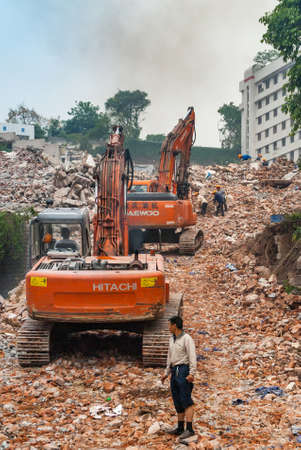Overview of Vastu Shastra in the Indian Cultural Context
Vastu Shastra, often referred to as the ancient science of architecture, holds a sacred place in the heart of Indian culture. Deeply rooted in centuries-old traditions, it is more than a set of architectural guidelines; it is a spiritual compass that shapes how spaces are created, inhabited, and revered across India. Drawing from the Sanskrit words Vastu (dwelling) and Shastra (science), this discipline integrates cosmic principles with practical design, ensuring harmony between nature, the built environment, and human life. In everyday living, from bustling cities like Mumbai and Delhi to serene villages in Tamil Nadu or Odisha, Vastu influences how people orient their homes, temples, and even workplaces. Its teachings guide the positioning of entrances, sanctums, kitchens, and water sources—all believed to channel positive energies and ward off negativity. Especially in temple construction and relocation, Vastu Shastra is seen not just as tradition but as an invocation of divine order, essential for creating spaces where devotees can connect deeply with the sacred. For millions across India, adhering to Vastu is about respecting ancestral wisdom and nurturing spiritual wellbeing—a belief system that weaves together faith, architecture, and everyday rituals into the vibrant tapestry of Indian life.
2. Historical Insights: Temple Architecture and Vastu Principles
India’s ancient temples are more than places of worship; they are living embodiments of Vastu Shastra—a profound architectural science rooted in cosmic balance and local tradition. The principles of Vastu, as outlined in ancient texts like the “Shilpa Shastras” and “Agamas,” have long guided temple construction, shaping how sacred spaces channel energy, invite divinity, and foster community.
Traditional Indian Temple Design Philosophies
The foundation of Indian temple architecture is the Vastu Purusha Mandala—a geometric diagram symbolizing the cosmic man and the universe itself. Every aspect, from orientation to proportions, aligns with cardinal directions and elemental energies. For example, temples are typically oriented towards the east to welcome Surya Devta (the Sun God) at dawn, infusing the sanctum with spiritual vitality. The Garbhagriha (sanctum sanctorum), often placed at the center, becomes the axis mundi—the pivot between earth and cosmos.
Regional Influences on Sacred Architecture
While Vastu Shastra provides universal guidelines, India’s diverse geography and culture have led to striking regional variations in temple design:
| Region | Distinctive Features | Local Customs Integrated |
|---|---|---|
| South India (Dravidian Style) | Pyramidal vimanas, sculpted gopurams (gateway towers) | Dedicated water tanks, elaborate processional routes for festivals like Pongal |
| North India (Nagara Style) | Curtained shikharas (spire towers), intricate carvings | Sacred gardens, special rituals during Holi & Diwali integrated into layout |
| Western India (Vesara & Solanki Styles) | Mixed curvilinear and stepped towers, ornate pillars | Inclusion of stepwells for ritual bathing before darshan |
| Eastern India (Kalinga & Assam Styles) | Tall rekha deul towers, terracotta motifs | Sacred groves nearby for nature worship—reflecting local ecological beliefs |
The Living Tradition: Adapting Vastu through Ages
The genius of Indian temple architecture lies in its ability to blend eternal Vastu principles with evolving cultural contexts. Whether built atop Himalayan foothills or along southern coasts, each temple embodies a dialogue between scriptural wisdom and regional identity. Local artisans interpret Vastu in tune with indigenous materials, climatic needs, and community beliefs—making every temple a unique spiritual landmark shaped by both ancient codes and contemporary life.

3. The Sacred Process: Temple Relocation & Vastu Compliance
India, the land of timeless spiritual traditions, has witnessed numerous instances where ancient temples have been relocated or reconstructed due to natural calamities, urban development, or preservation needs. In these moments of transition, Vastu Shastra emerges as the guiding force that ensures not just architectural harmony but also sustains the spiritual energy and cultural essence of these sacred spaces.
Vastu Shastra: The Spiritual Compass
When a temple is relocated, it is never a mere physical act. Instead, it is a sacred process that demands the utmost reverence for cosmic order and spiritual alignment. Vastu Shastra prescribes precise guidelines for site selection, orientation, and layout. These principles are meticulously followed by temple architects (Sthapathis) and priests to ensure that the sanctum sanctorum (garbhagriha) faces the most auspicious direction, often east, harnessing the first rays of Surya (the Sun God).
Case Studies: Upholding Dharma through Relocation
Across India, examples such as the relocation of the Kedarnath Temples mandapa after devastating floods, or the shifting of ancient shrines during river course changes in Odisha, reflect a deep commitment to Vastu compliance. Each step—from choosing a new site with positive energies (prana), to performing elaborate rituals like Bhoomi Pooja—ensures that divine vibrations are preserved. The reinstallation ceremonies often involve astrological calculations and community participation, reflecting how Vastu acts as a bridge between tradition and transformation.
Cultural Integrity in Modern Times
Even as technology advances and cities expand, Indian communities remain steadfast in upholding Vastu tenets during temple reconstruction. This adherence is seen not only as an act of faith but also as a means to preserve heritage and foster collective well-being. The result is a seamless integration of ancient wisdom into contemporary practice, ensuring every relocated temple continues to be an epicenter of spiritual resonance and cultural continuity.
4. Societal and Spiritual Impact of Temple Reconstruction
In the heart of India’s vibrant culture, temples are not just places of worship—they are powerful centers of community life, spiritual growth, and collective identity. When temples undergo reconstruction or relocation as per Vastu Shastra principles, the impact resonates far beyond architecture. Let us explore how aligning temple structures with Vastu norms deeply influences Indian society and spiritual practices.
Community Cohesion and Cultural Continuity
Temples act as anchors for communities, especially in rural Bharat where social fabric is closely interwoven with local shrines. When a temple is rebuilt according to Vastu Shastra, it is believed to restore positive energy flow (prana), inviting harmony and prosperity. The process itself becomes a sacred event—villagers participate in rituals like Bhoomi Pujan and Kumbhabhishekam, rekindling traditional bonds and fostering unity across generations.
Table: Societal Benefits of Vastu-based Temple Reconstruction
| Aspect | Traditional Practice | Vastu Influence |
|---|---|---|
| Social Unity | Festivals & Rituals | Strengthened through collective participation |
| Cultural Preservation | Oral Histories & Art Forms | Revitalized via temple murals & music traditions |
| Local Economy | Pilgrimage Tourism | Boosted by renewed spiritual magnetism |
Spiritual Resonance and Well-being
The alignment of temples as per Vastu directions—such as the sanctum facing east or north—enhances the devotees’ spiritual experience. According to Indian belief systems, when cosmic energies are properly channelled, worshippers feel more connected to the divine. Practices like pradakshina (circumambulation) around the Garbhagriha become more meaningful, amplifying inner peace and dharmic consciousness.
The Subtle Energies Decoded: Vastu’s Spiritual Framework
| Vastu Element | Spiritual Significance |
|---|---|
| Brahmasthan (Centre) | Nucleus of divine energy; focus for meditation |
| Main Entrance (East/North) | Gateway for auspicious energies; symbolizes sunrise/new beginnings |
| Dhwaja Sthambha (Flag Pole) | Antenna for cosmic vibrations; rallying point for devotees |
The reconstruction journey guided by Vastu is thus much more than physical rebuilding—it is a revival of faith, hope, and shared destiny. This deep-rooted impact strengthens both the societal structure and the spiritual backbone of Indian communities, ensuring that ancient wisdom continues to inspire future generations.
5. Local Case Studies: Voices From Devotees and Vastu Experts
Experiences from the Heart of India’s Temples
Across various states like Tamil Nadu, Gujarat, and Odisha, temple relocation and reconstruction projects have ignited deep emotions and spirited discussions among devotees. For instance, in the historic town of Kanchipuram, local devotees recall how the repositioning of a centuries-old shrine, guided by Vastu Shastra principles, was met with both skepticism and hope. “We were worried about disturbing sacred energies,” shares Priya Iyer, a lifelong devotee. “But after the rituals and Vastu consultations, there was a renewed sense of peace.” Her words echo the collective sentiment that spiritual well-being is intrinsically tied to spatial harmony.
The Priest’s Perspective: Balancing Tradition & Transformation
Pujaris (temple priests) often play a pivotal role in mediating between tradition and change. In Ahmedabad, Mahesh Tripathi, a respected priest, recounts how his temple’s sanctum was realigned according to Vastu guidelines during reconstruction after monsoon damage. “The shift brought back an inexplicable vibrancy to our ceremonies,” he notes. Yet, he emphasizes that every decision is made with utmost respect for ancient customs—a delicate balancing act reflecting both faith and practicality.
Contemporary Vastu Consultants: Bridging Science & Spirituality
Modern Vastu experts like Dr. Rakesh Sharma are increasingly engaged in temple projects across India. Dr. Sharma explains, “We decode numbers, directions, and energies based on traditional texts but also incorporate inputs from structural engineers.” He highlights recent projects where correcting entryways or altar positions has reportedly enhanced both footfall and community satisfaction. According to him, this integration of Vastu wisdom with contemporary needs is shaping a new era for temple architecture.
Lived Realities: A Collective Journey
From Rajasthan’s desert temples to Kerala’s lush shrines, these voices illustrate that Vastu Shastra’s impact is not merely theoretical—it is lived daily by communities striving for harmony amid change. Whether it is the subtle shift in ritual timings or the visible reorientation of temple entrances, devotees and experts alike agree that when Vastu is respected, positive transformation often follows. This evolving practice reflects India’s ability to honour its roots while adapting to modern realities—offering inspiration for future temple projects nationwide.
6. Contemporary Challenges and Adaptations
Navigating Urban Realities with Ancient Wisdom
In present-day India, the relocation and reconstruction of temples are deeply influenced by Vastu Shastra, yet modern challenges have brought forth unique complexities. Urban expansion, space constraints, and evolving community needs often create situations where traditional Vastu principles are difficult to implement in their purest form. For example, finding land oriented perfectly to cardinal directions or ensuring a temple’s sanctum faces east can become daunting in crowded cities like Mumbai or Bengaluru. Yet, the spirit of Vastu remains undiminished, as architects and communities strive to uphold its essence even amidst spatial limitations.
Balancing Tradition and Innovation
Communities are increasingly adopting creative solutions to honor Vastu while addressing practical constraints. Some temples incorporate symbolic alignments—using mirrors or specific materials—to emulate traditional energy flows when physical orientation is not feasible. Others consult experienced Vastu consultants to make micro-adjustments that maximize spiritual harmony within available urban layouts. This adaptive approach reflects a blend of reverence for tradition and pragmatic innovation, ensuring temples remain vibrant centers of cultural life.
The Social Pulse: Community Engagement
Adaptation goes beyond architecture; it’s about collective spirit. Temple committees often engage local devotees, city planners, and cultural historians to reach consensus on new designs that reflect both Vastu ideals and contemporary realities. These collaborative efforts foster a sense of shared ownership and pride, transforming challenges into opportunities for renewed unity.
The Future: Reimagining Sacred Spaces
As India’s cities continue to evolve, so too does the approach towards temple construction guided by Vastu Shastra. The ongoing dialogue between ancient guidelines and modern necessities has sparked a renaissance in sacred architecture—one that honors both heritage and progress. Through mindful adaptation and community involvement, temples remain sanctuaries of inspiration, their foundations rooted in age-old wisdom yet open to the possibilities of tomorrow.


